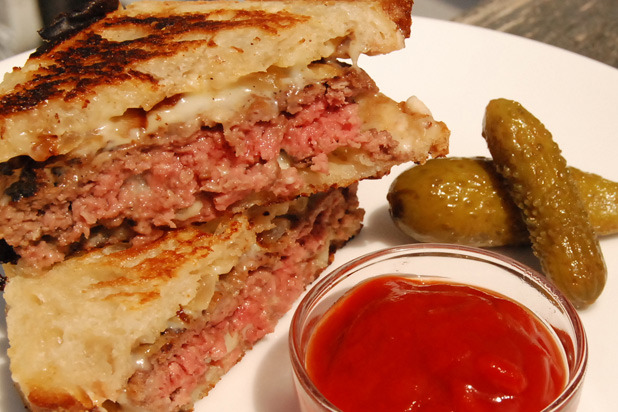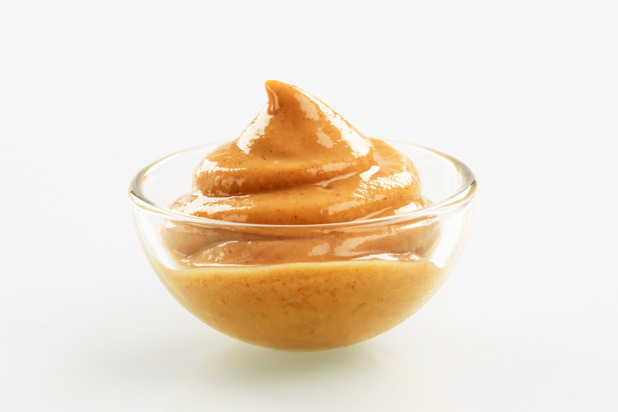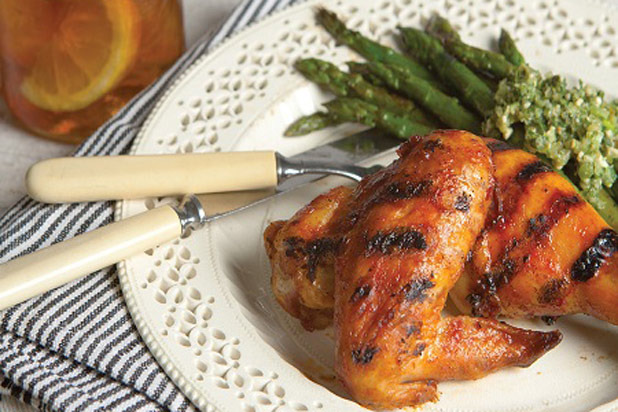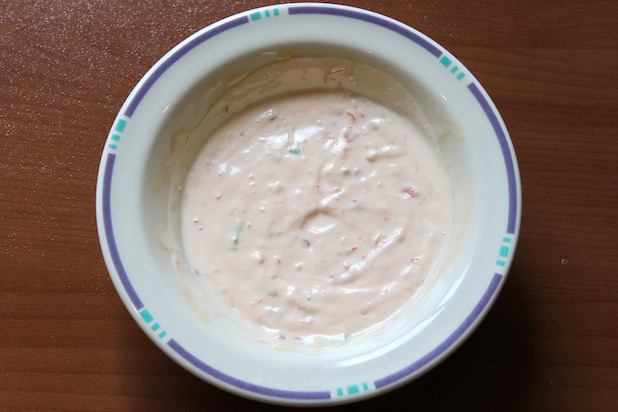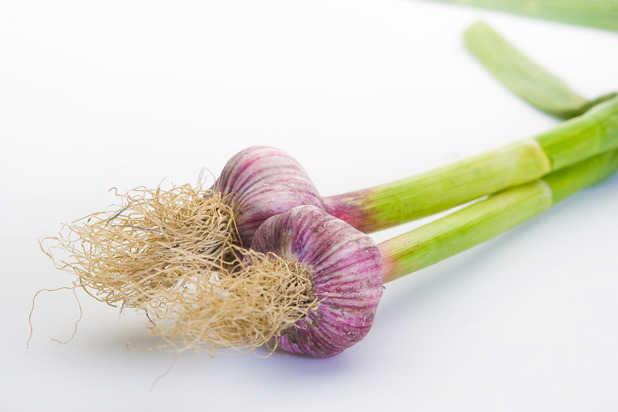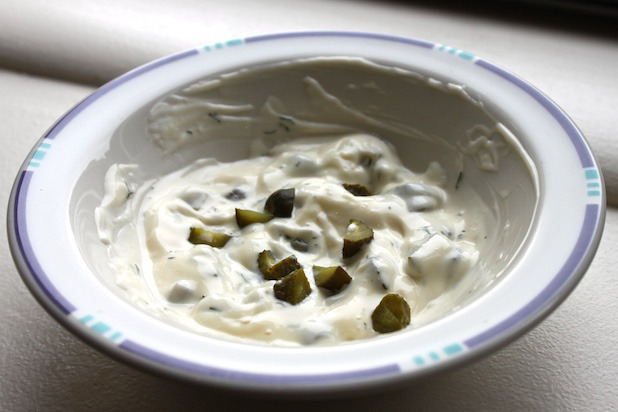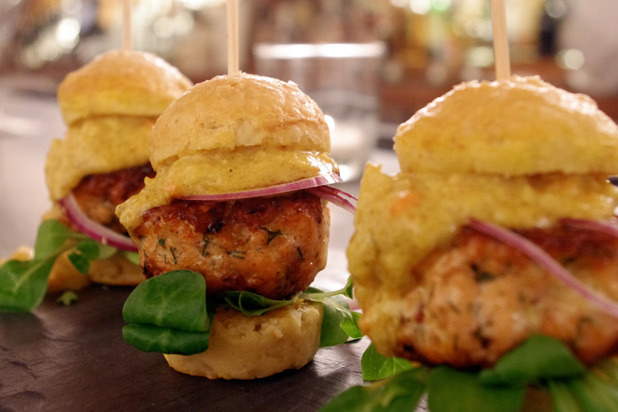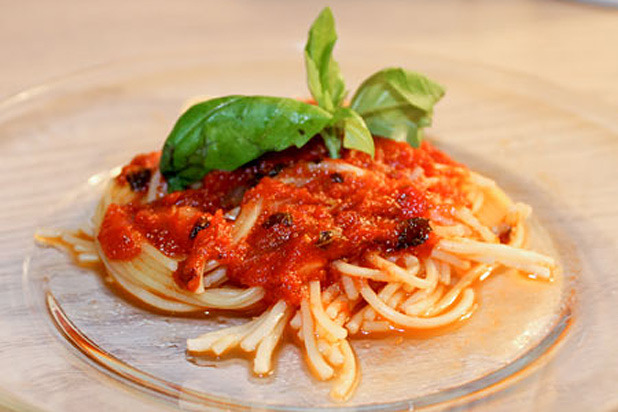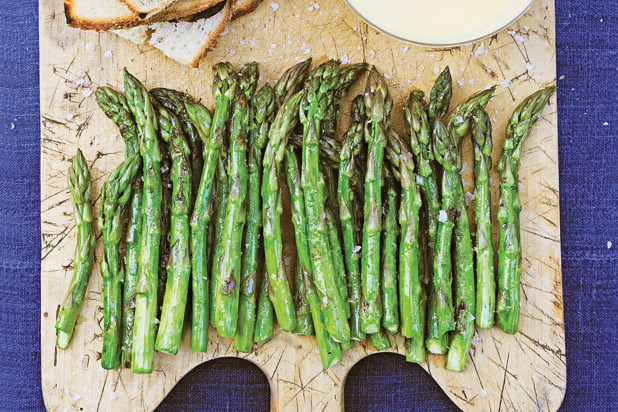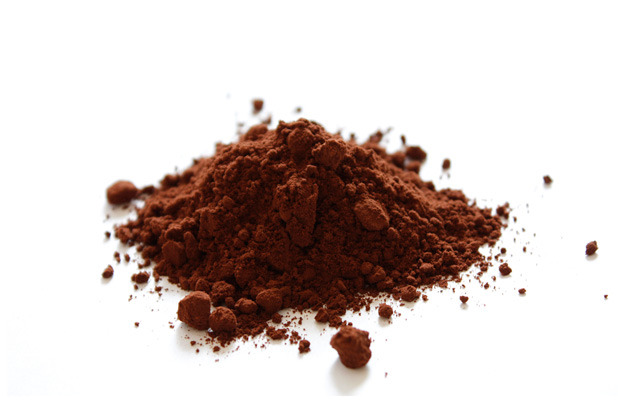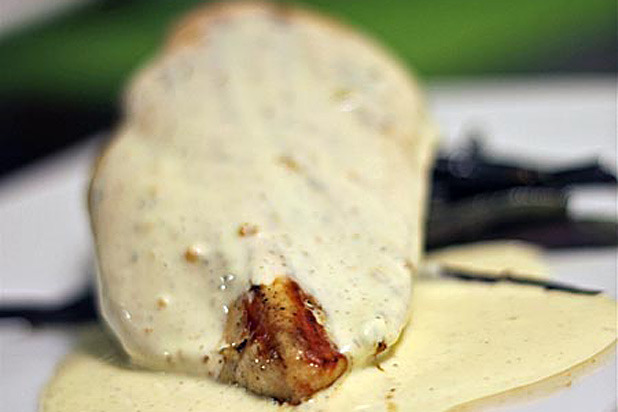America's Favorite Homemade Sauces... With A Twist Slideshow
Ah, good old ketchup — or is that "catsup"? Perhaps, written on some old vintage bottle somewhere, you've even glimpsed "catchup." Follow the etymology of the word and things get more interesting than you think. Though thought of as quintessentially American, this sauce has traveled quite a journey to reach our shores — originally "ke-tsiap" (Amoy Chinese), on to "kechap" (Malay), and finally "ketjap" (Dutch) before making the leap into the English lexicon. And this sauce wasn't always a simple concoction of tomatoes, vinegar, and proprietary seasonings (chemicals?)... early versions apparently included mushrooms, onions, lemons, and anchovies (!).
All very fascinating, to be sure, but there's probably one question burning on everyone's minds that is far more important — how the heck to get the mighty stuff out of the bottle. Well, we're here to help. It is said that holding the infamous glass bottle parallel to the table and giving an authoritative whack to the part that reads "57" does the trick. Does it really work? Find out for yourself.
Click here to see the Grilled Patty Melt on Sourdough with Spicy Ketchup Recipe.
2. Mustard
Ketchup's necessary counterpart (or evil nemesis, depending on whom you ask) pretty much has de facto condiment status on corn dogs, corned beef sandwiches, and hot dogs. It's also worked into salad dressings, like the ever-popular, sweet and tangy honey mustard. Go ahead, slather it on, just not on yourself, or your clothes will be yellow as a canary for good — good old American yellow mustard contains turmeric, a spice notorious for its fabric-staining powers.
3. Barbecue Sauce
So much could be said about barbecue sauce and its many iterations, but instead, here's a useful tidbit. Jackie Garvin, author of the blog Syrup and Biscuits, offers this economical tip on using up leftover condiments: "Frequently, I find several partial jars of condiments such as salsa, mustard, jellies/jams, and relishes. You can combine them all, pure for a smooth consistency, and then simmer until thick. Add honey, sugar, or maple syrup for sweetness. Vinegar and mustard adds acidity. Taste and adjust to your liking. For a smoky flavor, add chipotle or artificial smoke. The sauce will turn out differently each time you make it, but that keeps it fun and interesting. It's an efficient way to clean out your refrigerator and wind up with an impressive homemade barbecue sauce, to boot."
Click here to see the Grilled Chicken with Buffalo BBQ Sauce Recipe.
4. Mayo
OK, everyone knows what mayo is, so let's cut to the interesting stuff that people might not know about. Here are three interesting tidbits:
Sixty-four percent less fat than regular mayo? How does Miracle Whip do it? It must be by some unnatural voodoo conjured up in a mad food scientist's lab, hence the name. It's not really a miracle, actually — as is often the case with "diet" or "low-fat" versions of foods, where one giveth, one must also taketh away. After water, soybean oil, and vinegar, sugar is the fourth ingredient. Sugar? What is sugar doing in there? Probably to make up for the loss of flavor from water being the first ingredient (which is also odd). A special machine (from which Miracle Whip derives its name) whips it up to give it that spreadable texture much needed for sandwiches.
Making homemade mayo (aka aioli minus garlic... see next slide)? Check the weather first — it's not something to attempt before or during a thunderstorm. No, you won't spontaneously combust. It's just never going to happen, that's all. During a thunderstorm, the air is filled with positively and negatively charged ions. These ions will prevent the eggs from emulsifying the sauce, and instead of a thick and creamy mayo, it'll just be a hot mess.
Another interesting but useless tidbit: I once heard on a now-defunct show on Nickelodeon that mayonnaise grows hair in the sun. True? Who knows. Grab a jar of expired mayo and give it a shot.
5. Aioli
Mayo's fancy-schmancy cousin for the food snobs out there. Actually, it's really just homemade mayo with a touch (OK, a strong touch) of raw garlic, and in some versions, saffron (although that is probably a bit of an extravagance these days). Slather it on a sandwich and from-the-jar mayo will never again be enough. Kewpie and Hellmann's diehards, eat your hearts out.
6. Tartar Sauce
Shrimp cocktails, fried oysters, and fish and chips just wouldn't seem complete without a little tartar sauce on the side. But what exactly is in it? It's always there, sitting off to the side of a seafood platter, but most people probably just dip in absent-mindedly without a second thought, so it probably hasn't occurred many people to find out what's in it. Until now. The Daily Meal's Drink editor, Maryse Chevriere, attempts to recreate the fantastic tartar sauce from New York City's famed Pearl Oyster Bar with her recipe.
7. Remoulade
Here we go again with another one of those sauces that's seemingly everywhere but mysterious in its makeup. Before we go messing around with it, best to tell folks what's in the original version. It's a compound sauce — take slide two, mustard, and add to it slide four, mayo. Drop in some chopped tarragon or parsley, capers, and maybe some anchovies, gherkins (pickles), and a shot of Tabasco. What's it good for? Pretty much anything tartar sauce is good for, plus crab cakes. Now, here's an alternate version.
Click here to see the Salmon Sliders with Curry Remoulade Recipe.
8. Tomato Sauce
It's the foundation of pastas and pizzas, meatball subs and calzones. Italian cuisine has become so intertwined with our food culture that many Italian favorites have long been American favorites as well, and tomato sauce is definitely one of them. But a good tomato sauce can be hard to find — sure, there are always the jar versions, which can be jazzed up with a base of freshly sautéed onion, garlic, and chopped fresh herbs, but nothing beats homemade. Check out Terri Ciccone's recipe which might just give the Hamburgler pause and a new name.
9. Hollandaise Sauce
People probably think one of two things when they see the words "hollandaise sauce." If it's on a menu, they're thinking brunch; if it's on a recipe, they're thinking "broken!" A broken hollandaise sauce might seem like the end of the world, but fixing it is not really any different from fixing a mayo, another emulsified sauce (a fancy way of saying, "Hey, there are eggs in this and they are doing all the work! Sometimes.")
Let's back up a second. How can a cook tell if an emulsified sauce is broken? Two signs: bits and pieces of white grainy stuff floating around, or a visible layer of oil floating above everything else, especially on the edges.
Problem identified. Now don't throw it out! The fix? I've heard some chefs say that beating in a few drops of warm water can fix it, but personally, that's never worked for me. Here's something that works pretty well: Grab another bowl, beat an egg yolk with a whisk until thoroughly blended, and then slowly stream in (a mere trickle at first, and then more as it starts to thicken) the broken sauce, whisking all the time. If that doesn't work, there's probably a storm coming (see slide four). But since this is a hollandaise (a warm sauce), if the eggs have curdled... well, it's probably easier just to start over.
Click here to see the Roasted Asparagus with Hollandaise Sauce on Toast Recipe.
10. Chocolate Sauce
It just wouldn't be right to leave out dessert. Whether drizzled on a sundae or a slice of chocolate cake (mmm, more chocolate on chocolate), or stirred into a chocolate malt, chocolate sauce is a classic. Reaching for that bottle of Hershey's is a piece of cake, but it's also nice to have something from scratch once in a while.
11. Alabama White Sauce
This is Alabama's answer to comeback sauce. Not up on the debate? Mississippians will likely say there is no debate, since they ended it — it's called comeback sauce for a reason — but hey, food's supposed to be about love. Alabama white sauce is a barbecue sauce that is a little off the beaten path — it uses mayo as its base. A little lemon juice and cider vinegar give it some acidity, and some jalapeño and horseradish give it a kick and pungency. Try one and then the other and then decide which is best. Mississippi has comeback sauce and Alabama has white sauce. It's a big country and there's certainly room enough for both.
Click here to see the Grilled Chicken with Alabama White Sauce Recipe.
